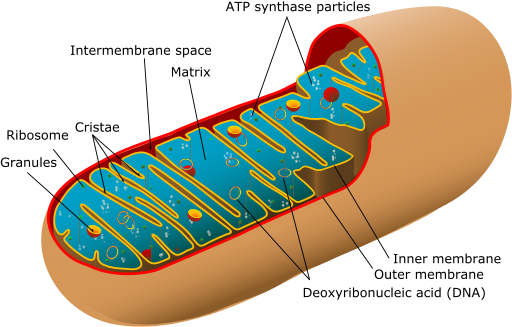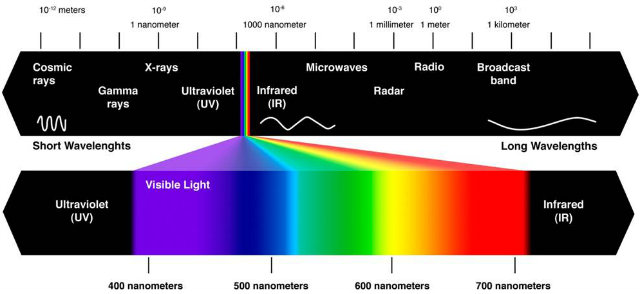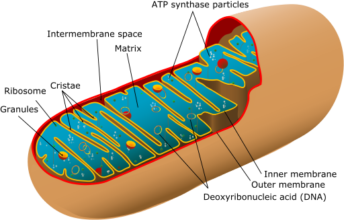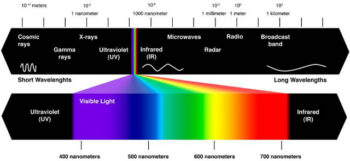 Reading Time: 7 minutes
Reading Time: 7 minutesChances are you’re not reading this article in a park or in your backyard. That’s because the average American spends a whopping 93% of his or her time indoors. If you’re only getting outside for a few hours a week, you’re likely not getting enough natural light, which can have far bigger health consequences than people realize — like headaches, chronic fatigue, insomnia, and depression.
The reality is that we spend most of our time in buildings filled with artificial lighting, a lifestyle our ancestors wouldn’t recognize. Human bodies have functioned around the natural light cycle for the vast majority of history. Despite amazing (and efficient) lighting technology, our biological systems are designed for sunlight. We need natural light, and if we don’t get it, things like our cellular energy systems and our circadian rhythm get out of whack.
If that sounds familiar, and you’ve grown accustomed to being tired and low-energy much of the time, you should ask yourself the question: am I getting enough healthy, natural light?

The obvious answer is to get outside more, but that doesn’t mean it’s the easy answer. If you’re not getting enough natural light, you can fix it by getting outdoors in the sun for a few extra hours every day. But who has a few extra hours sitting around every day?
Most people work or go to school, so most of our free time is at night or on the weekends. Plus, many people live in climates that don’t get enough sun for long periods of time throughout the year. If you think about your daily and weekly routine, you probably spend less than 10% of your life receiving healthy forms of natural light.
Fortunately, there’s a way to get more therapeutic light without leaving your home or carving more hours out of your schedule. It’s called red light therapy.
What Is Light Therapy?
Light therapy — or photobiomodulation (PBM) — is a non-invasive therapy that delivers natural light to your skin and cells. Not just any natural light, though — only specific red and near infrared wavelengths that have been found to be the most clinically therapeutic, without harmful UV rays, heat, or side effects. A quality light therapy device uses medical-grade LEDs to deliver the light to your skin and cells, where it produces all kinds of health benefits.
How Light Therapy Works
Light therapy works at the cellular level, in your mitochondria. They’re the powerhouses of your cells, always hard at work making more ATP (adenosine triphosphate) energy to fuel your body. The more energy your cells can make, the better your body functions and the better you feel.

ATP is always being made in the mitochondria through the cellular respiration process, which cycles the oxygen we breathe, the water we drink, and the food we eat — with the goal of producing more energy. When you’re sick, injured, stressed, or tired, your mitochondria produce excess nitric oxide, limiting ATP production by competing with oxygen and increasing oxidative stress.
The photons in red and near infrared light excite the electrons involved in cellular respiration, breaking up nitric oxide bonds and letting hydrogen and water move through the respiration process. The more efficiently your cells create ATP energy through cellular respiration, the better your cells function on all levels and the better your body feels and performs.
Clinically-Proven Health Benefits of Light Therapy
Hundreds of clinical trials and studies have been conducted on the effectiveness of light therapy, with the research showing a wide range of significant health benefits. These are four of the most widely studied areas of benefits:
1. Skin, Collagen, and Anti-Aging
Red light therapy feels rejuvenating because it stimulates the production of collagen, which gives skin its elasticity, hair its strength, and connective tissue its ability to hold everything together. Numerous studies and trials have found light therapy improves skin tone and complexion, diminishes signs of aging, and speeds the healing of wounds and scars.
2. Melatonin and Sleep
All that time indoors means a lot of unhealthy artificial light that messes up your circadian rhythm and makes it harder to sleep. Red and near infrared does the opposite and helps protect your internal clock. Clinical studies show light therapy also increases natural melatonin production for healthier sleep.
3. Training and Muscle Recovery
Many elite athletes and trainers use light therapy in their workout and recovery routines, like NFL stars Patrick Peterson and Von Miller, and fighters like UFC champion TJ Dillashaw. Numerous trials and studies have found light therapy helps your body produce more cellular energy and reduces oxidative stress. That, in turn, helps tired and damaged muscle tissue repair and regenerate faster.
Recent 2016 research published in the American Journal of Physical Medicine and Rehabilitation shows the application of light therapy also promotes the growth of healthy muscle tissue, naturally increasing muscle size and bulk — as well as strength.
A 2015 study published in the European Journal of Applied Physiology compared muscle growth and strength between two groups of athletes — one using light therapy combined with exercise, the other using exercise alone. Researchers found muscle thickness and strength were significantly improved (by over 50%) in the athletes who used light therapy. Results were clearly measurable using ultrasound imaging and isokinetic dynamometry.
4. Inflammation and Joint Pain
One of the primary responses to red light therapy is a pronounced reduction in inflammation and oxidative stress, with significantly lowered joint pain — as shown in numerous clinical trials.

What to Look for in a Light Therapy Device
In the past, light therapy was only available in spas and clinics. Today, you can get a quality in-home light therapy device and enjoy the health benefits in comfort and convenience. To benefit from light therapy, you simply stand or sit in front of a device for about ten minutes a day and soak up a therapeutic dose of natural red and near infrared light.
If you’re not as familiar with light therapy, it can be difficult to compare devices. When considering different devices, start by making sure the manufacturer is transparent and trustworthy. Not sure? Ask these three key questions:
- Are they open about their product specs, like power measurements and wavelengths? If you have to hunt that data down, it’s a bad sign.
- Are their product specs and power measurements independently verified?
- Have the product and production process been cleared by the FDA? If not, why?
Once you’re satisfied, the next step is to compare devices. These are the three most important factors to consider:
- Treatment Area Size: To experience the full range of light therapy benefits, it’s best to treat your entire body with a uniform, consistent dosage. Size matters in light therapy because you can’t treat the whole body or get that ideal, uniform dose from a small device. Look for a product that can cover enough treatment area to get the job done for your entire body.
- Total Delivered Power: Measuring the power of light is complex, and it’s nearly impossible to get accurate readings without investing in expensive diagnostic equipment. You often see devices measured in “irradiance,” or light power. But that’s just a start and doesn’t tell you much. Because treatment area is so vital, you have to go further and measure total light output based on the power and the total area the device covers. That’s how photobiomodulation scientists measure light therapy devices. If a manufacturer only gives an irradiance statistic and won’t provide a total delivered power metric that takes into account treatment size area, look elsewhere.
- Clinically-Proven Wavelengths: Not all wavelengths on the natural light spectrum are therapeutic. The red and near infrared range of wavelengths from approximately 600-950 nanometers is known as the “therapeutic window” for light therapy, but the 700-770 nanometer range has little benefit. So, stick to devices offering red light in the mid-600 nanometer range and near infrared light in the mid-800 nanometer range, which have been repeatedly shown to be the most clinically effective.

The Real Conclusion: Get More Healthy Light
Our bodies need natural light, but our modern lifestyles keep us indoors. Natural light deficiency can have serious health consequences. Fortunately, even if you can’t get outside in the sun more often, you can get the natural light your body needs — and a lot of clinically proven health benefits — from a light therapy device.












